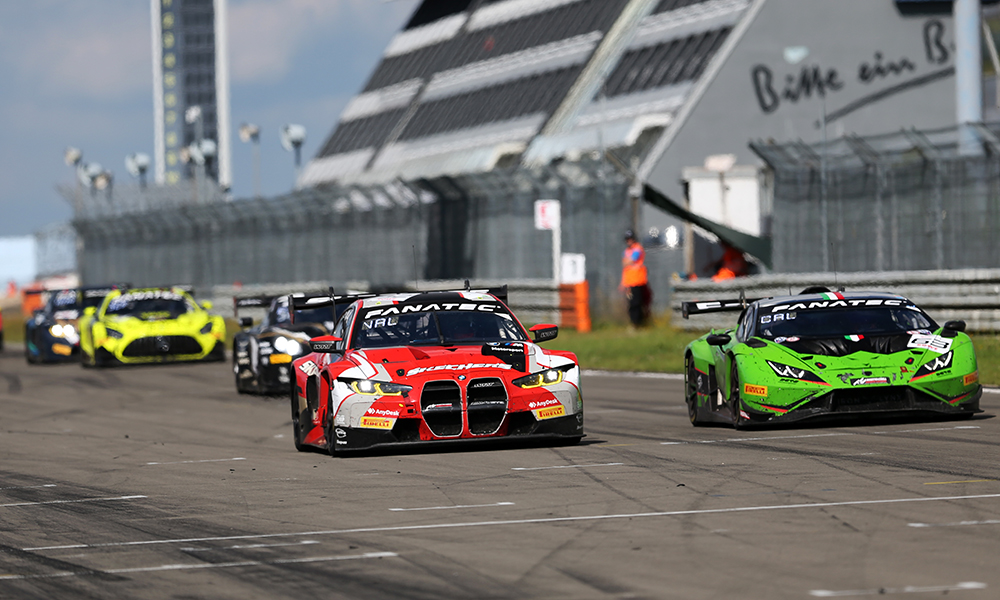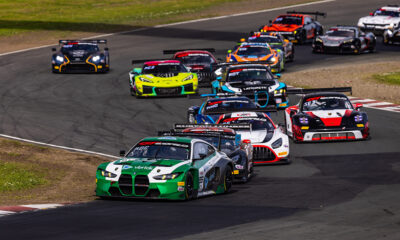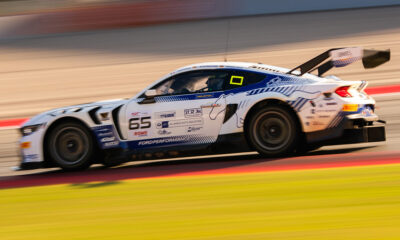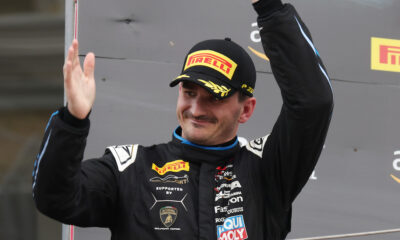
Photo: JEP/SRO
Stephane Ratel has dismissed any prospect of torque sensors being used in SRO Motorsports Group-organized GT3 championships in the future, stating that the device, introduced into the LMGT3 class of the FIA World Endurance Championship and soon-to-be the IMSA WeatherTech SportsCar Championship’s GT3-based categories “are not for us.”
The sensors, which are attached to driveshafts to measure torque and generate information on power output and energy usage, has been a contentious topic, largely due to costs, although both the WEC and IMSA are utilizing them in an effort to produce more accurate Balance of Performance.
Ratel, one of the founding fathers of the GT3 formula, however, has challenged the use of the sensors has actually resulted in closer racing.
“If you look across the board, can we say today with torque sensors the BoP is better than without torque sensors? I don’t know,” he told Sportscar365.
“Ever since when I fought against the ‘convergence’ my biggest fear is that GT3 gets too expensive to a point where we lose [control].
“I look between British GT, World Challenge, Intercontinental [GT Challenge], we represent about 200 GT3 cars compared to series that only need 20.
“Our end-goal is completely different. In IMSA, if you have 20 GT3 cars, it’s great. WEC is very happy with 20 GT3 cars too and DTM is as well.
“We need 200 globally, so it’s a different budget target.”
Ratel is also cautious that budgets in GT3 in general could spiral out of control if all series mandate the sensors, which falls on the c0sts of competitors.
“If we keep raising the costs of racing these cars, we’ll go back to 20 cars in [GTWC Europe] Sprint and 30 in Endurance,” he said. “That’s not what we want. That’s not our business model.
“Our business model, what has made the success for 12 years of Blancpain GT/Fanatec GT World Challenge is this big grid, and we have an average of 50 cars ever since we started in 2011.
“For that, I need to keep the costs down and there’s no doubt the torque sensors is expensive. It’s expensive for the teams, it’s expensive for the promoter because if you receive this mass of data, you need people behind screens, and a lot of them.
“It’s not a joke.”
Ratel’s comments come at a time when several WeatherTech Championship GTD entrants have voiced concern on the cost and availability of the sensors for next year, which come from a single-supplier.
IMSA, however, has appeared to hold its ground on implementing the sensors on GTD Pro and GTD cars next year.
“Will it prove to be a lot better than without it? We will see,” said Ratel. “For the moment, if you watched Spa this year, were torque sensors really needed?
“There were five [different] manufacturers in the top-six and nine cars on the lead lap in the last hour of the race.
“It’s close. You can always try to get closer but we’re getting to a point where… everyone wants everything to be within three-tenths of a second.
“Fine, but look at the Porsche Supercup. Look at LMP2, they are the same cars. Are these cars. Are these cars within three-tenths of a second? No.
“Driver’s ability, even if you have good Golds, Silvers, etc., teams, tire pressure, so many things. Two or three-tenths are everywhere.
“For now, everybody wants something that even one-make series are not able to deliver. We’re getting to a complete extreme.
“For the moment, our goal is to always be careful on cost. That’s why torque sensors are not for us. Not today and not tomorrow.”

























